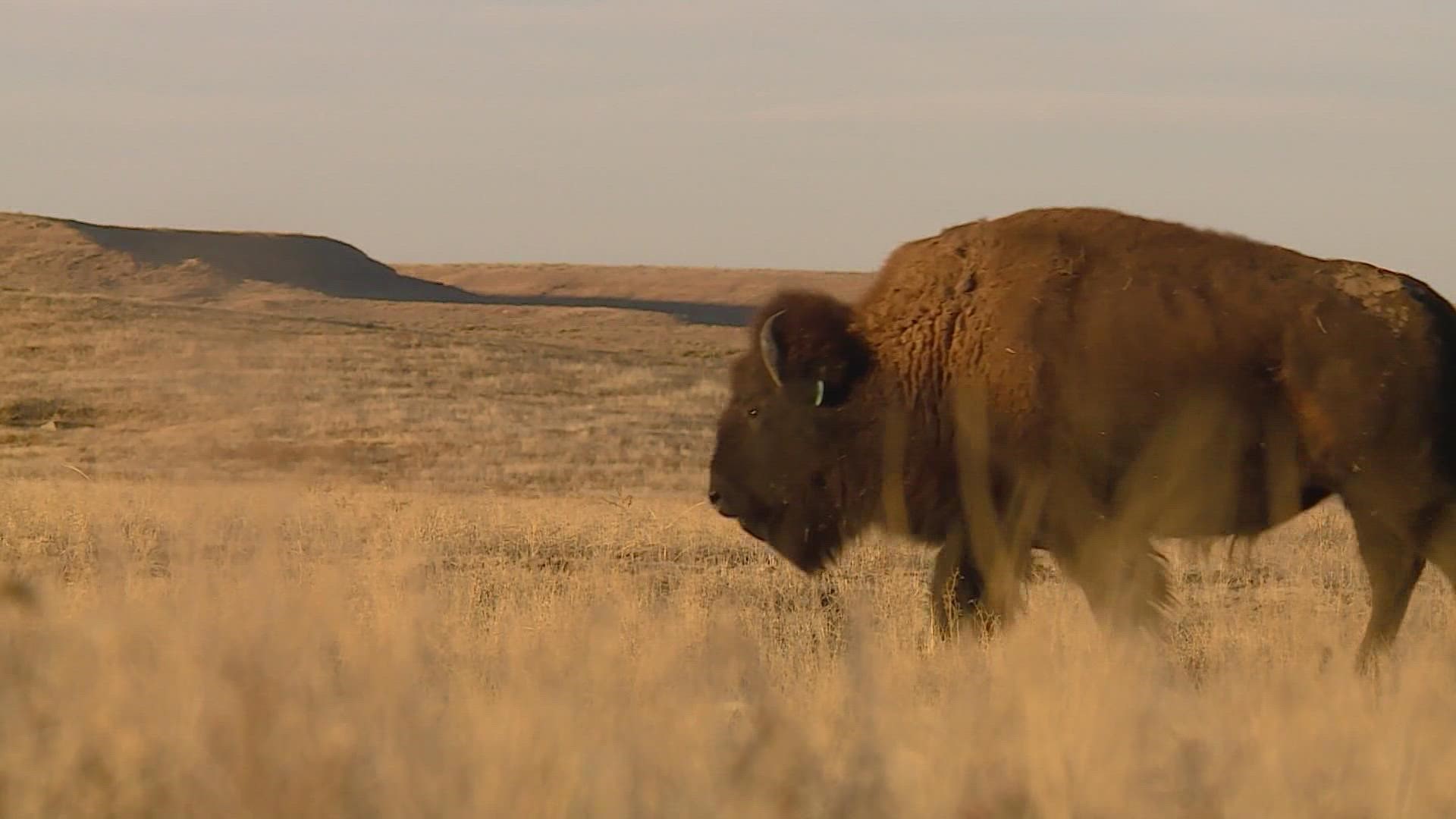STRASBURG, Colo. — America’s grasslands are shrinking. These prairies cover one-third of the planet’s land surface, and an estimated 70% of them have degraded.
But one local ranch is on a mission to bring back the grass. The Colorado-based nonprofit Savory Institute was gifted the West Bijou Ranch in Strasburg in 2017 to use as a test bed for a holistic land management strategy developed by the organization's founder, Allan Savory.
The shortgrass prairie there is already showing signs of recovery.
“When you’re on land that’s healing, it’s palpable and visceral. You can feel it," said Chris Kerston, who manages Savory Institute's spinoff company Land to Market. "You can feel the life energy on that piece of land, and it’s addicting.”
This week, farmers and ranchers from all over the world visited the Savory ranch to see its success in regenerating soil and to learn more about the Savory land management method.
Kerston said grasslands are highly efficient in sequestering carbon, they help recharge underground waterways and they harbor high levels of biodiversity.
And farmers and ranchers are the key to healing the world's grasslands, because the majority of the planet's prairie is privately owned.
“Grasslands are kind of the forgotten ecosystem," Kerston said. "There’s a lot of tree huggers out there. We’re trying to get some more grass huggers to be alongside and with that.”
He said that along with extreme drought and climate change, one of the biggest reasons for the degrading grassland soils is the loss of grazing animals.
But now, at the West Bijou ranch, they’ve put the grazers back – in this case bison, and they strategically herd them around the prairie.
He said the amount of time the animals spend in one spot is pre-calculated, so they know exactly how much grass the bison are expected to consume, and how much fertilizer they are expected to poop out.
The impact of the animals' heavy hoofprints is also pre-calculated. The right amount of trampling will leave enough vegetation intact, and the indentations in the ground will help capture rainwater.
"No good farmer says they've got it figured out, but it feels like a really good regenerative impact on the land," said Paul Greive, a rancher from California.
Greive has been learning from this Colorado ranch for years. He's a strong believer in the method, but has his own twist. Have you ever heard of herding chickens?
“That’s the real challenging part, is how to move flocks of 6,000 birds to fresh pasture every single day,” he said.
Greive owns a chicken ranch in Temecula, California called Pasture Bird. His solution to herding chickens is to move their house.
He built massive chicken coops on wheels that are programmed to move at just the right pace, and the birds follow. After nine years of trial and error, he said he's just about perfected the formula.
“The whole system is solved for the optimal amount of manure that we want to go down," he said. "So, we have 6,000 birds, 7,500 square feet, over a 24-hour period, with like a 90-day rest.”
He said ideally, it's a rotation of crops, then cattle, then chickens -- and it works. His soil is healthier than ever, and so are his chickens.
“Good healthy food," he said. "Good for the environment, and happy chickens. How do you not sign up for that?”
SUGGESTED VIDEOS: Animals and Wildlife

